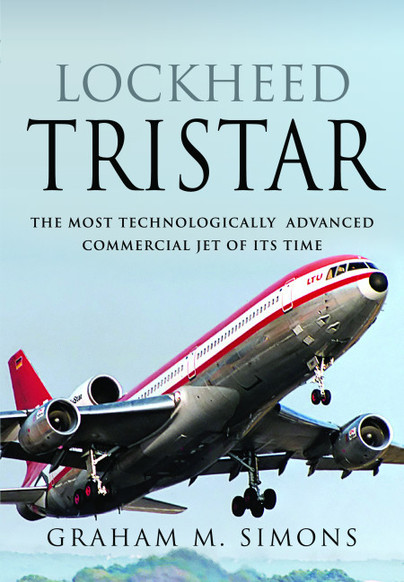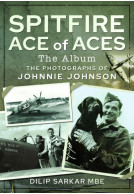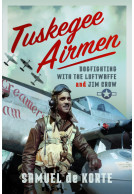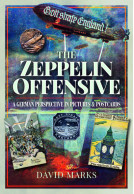Lockheed TriStar (ePub)
The Most Technologically Advanced Commercial Jet of Its Time
Imprint: Air World
File Size: 41.1 MB (.epub)
Illustrations: 175 colour illustrations
ISBN: 9781526758835
Published: 1st July 2021
| Other formats available - Buy the Hardback and get the eBook for £1.99! | Price |
|---|---|
| Lockheed TriStar Hardback Add to Basket | £30.00 |
In April 1972, after six gruelling years of design and development, the then Lockheed California Company (now Lockheed Martin) delivered the most technologically advanced commercial jet of its era, the L-1011 TriStar, to its first client, Eastern Airlines.
To mark the moment, Lockheed decided to make an impressive statement about the capabilities of its new medium-to-long-range, wide-body trijet airliner. It did so in spectacular fashion. Overseen by two test pilots, a total of 115 crew members, VIPs, Lockheed employees, and selected reporters boarded a TriStar at Lockheed’s Palmdale plant in California. The subsequent 4-hour, 13-minute flight to Washington Dulles Airport was achieved with virtually no input from the two pilots in the cockpit, the TriStar’s Automatic Flight Control System being ‘engaged from takeoff roll to landing’. It was, Lockheed proudly claimed, ‘the first cross-country flight without the need for human hands on the controls’.
As Lockheed themselves note, in a similar fashion to other iconic passenger airliners before it, the L-1011 had faced daunting challenges on the way to its inaugural flight. Divergent needs from competing airlines led to design challenges. Financial difficulties ravaged its engine’s manufacturer, Rolls-Royce, whilst a recession, fuelled by the world’s first oil crisis, lessened the demand for commercial airliners.
Lockheed, though, battled through these challenges, which even included international allegations of bribery, with the result that the TriStar, famed for its large, curved nose, low-set wings, and graceful swept tail, remained in production until 1984, by when 250 examples had been built. The toll on Lockheed, however, was too great and after the TriStar it withdrew from the commercial aircraft business.
In this revealing insight into the L-1011, the renowned aviation historian Graham M. Simons reveals the full story of this airliner’s design, development and service over the decades since 1970.
"...a thoughtful, well-organized overview from the beginning to the twilight days of this iconic airliner."
Large Scale Planes, June 2022
"Copiously illustrated, and including details of the avionics and other systems that made up the whole, this is a most interesting read for anyone interested in aviation."
Helicopter International
The Tristar L1011 was the most technologically advanced commercial aircraft at the time of its building. The book is thorough, starting with the usual acknowledgements and a 2 page introduction (including internally used company acronyms). The book then enters into Chapter 1 ‘What came before’, this being a history of Lockheed and its founders from the very beginning covering the Lockheed brothers, where they started and financial backing they received. Also covered are innovative designs such as Vega, Electra and Hercules. Chapter 2 ‘Genesis of a Giant’ moves onto the origin of the L1011, its airframe design and the designers with details on the company itself and others such as Rolls Royce involvement with the RB211 engines. As with Chapter 2 which covers the origin and designs of the airframe, Chapter 3 ‘Choice of Powerplant’ covers much the same, detailing the RR RB211 engines, along with their history and development also. Chapter 4 ‘Finance and problems’ of which, I believe, is fairly self-explanatory detailing both companies (Rolls Royce and Lockheed) problems at the time. Chapter 5 ‘Build’, Chapter 6 ‘Rollout and Flight test’, of which the titles of these describe exactly that along with the inaugural flight. Chapter 7 ‘TriStars on Tour!’ talks of initial flights, tours and the demonstrations taking officials on the aircraft to allow them to experience the new aircraft. Chapter 8 ‘On Board’ moves onto the internal layouts and various possible configurations of the aircraft. Chapter 9 ‘Into Service’ describes the orders from the various commercial airlines through a number of years. Chapter 10 ‘Later models and ‘Active Control’’ talks about upgrades and reconfigurations of the aircraft fuselage and control systems. Chapter 11 ‘The RAF and Marshall aerospace’ completes another well-known use of the aircraft i.e. its military service both as a passenger and air refuelling tanker and the subsequent conversions to such. Chapter 12 ‘Accidents and Incidents detail just this. The final Chapter 13 ‘Twilight of the Tristar’ talks about the expense of maintaining the Tristar as it aged, however, also mentioning in particular ‘Delta’ and the RAF as near enough the final operators of the aircraft. The book finishes up with a bibliography and index. Throughout a plethora of colour and black and white photographs make for an interesting publication.
IPMS Keighley
Featured in
JP4 Aviation Monthly - March 2022
Video review on Scale Modelling Now
Scale Modelling Now
This is a very interesting book and a great read, with plenty to entertain the aviation enthusiast and fan of classic jet liners.
Airport Spotting
Read the full review here
About Graham M. Simons
GRAHAM M. SIMONS was one of the founders of the world-famous aviation museum at Duxford near Cambridge where his interest was piqued watching the making of the film Battle of Britain there in the late 1960s. From this, and with an engineering background, he progressed to membership of a number of aviation societies, including sitting on the British Aviation Preservation Council, eventually taking the position of Engineering Director with one group. Graham combines his love of writing with his skills in production to create and publish aviation histories focused on a variety of subjects.





















